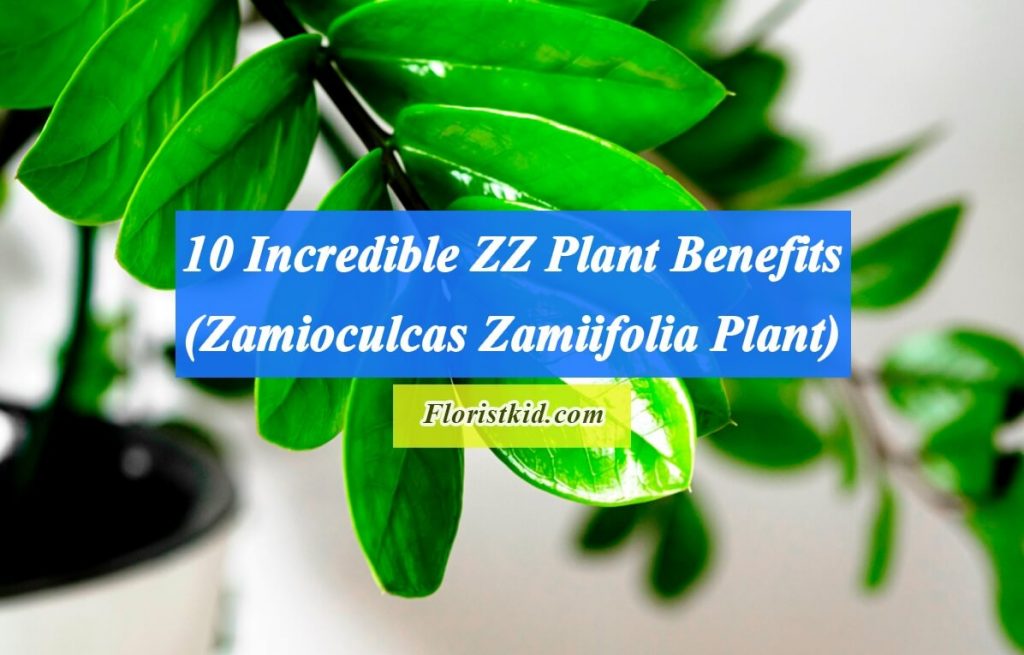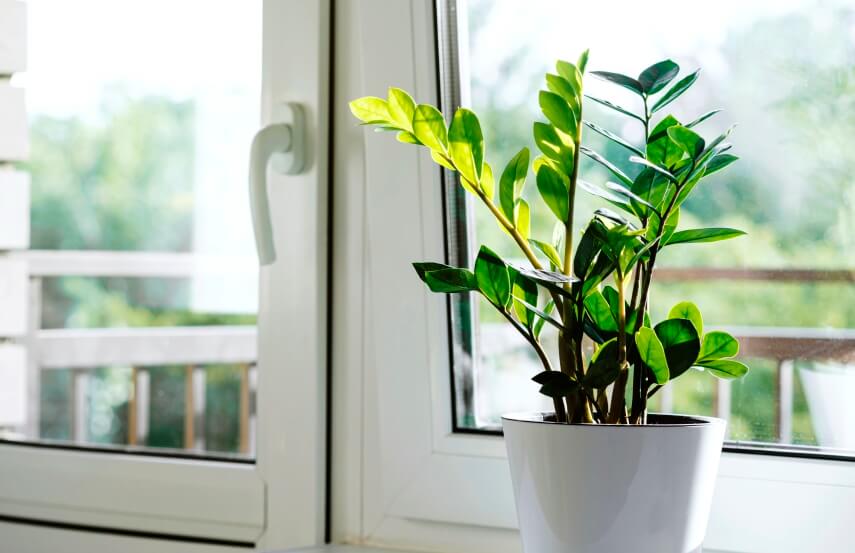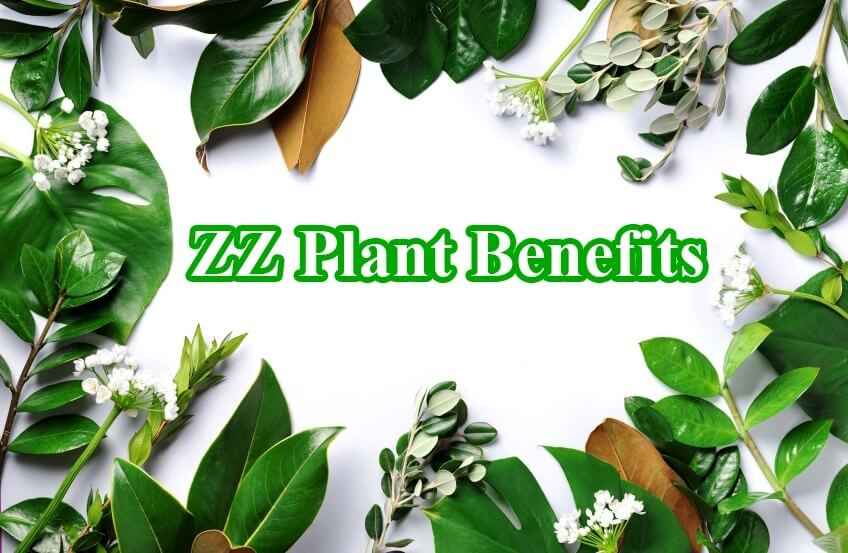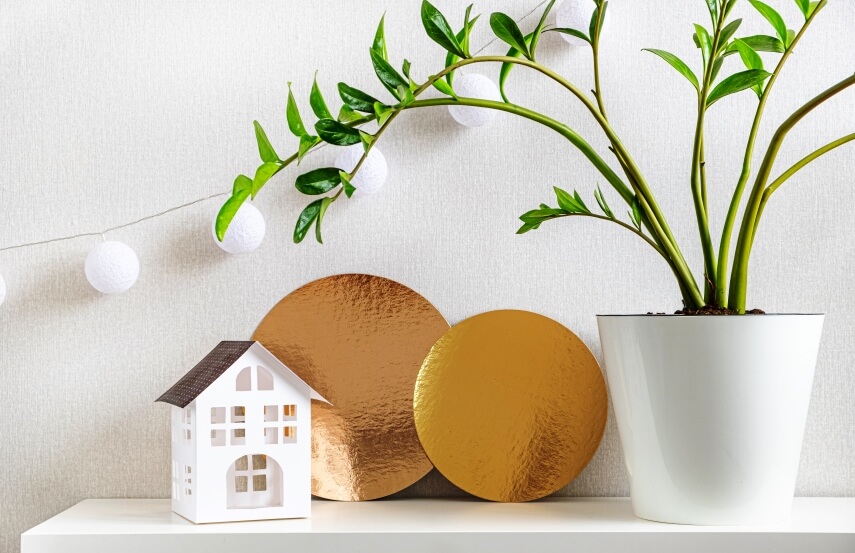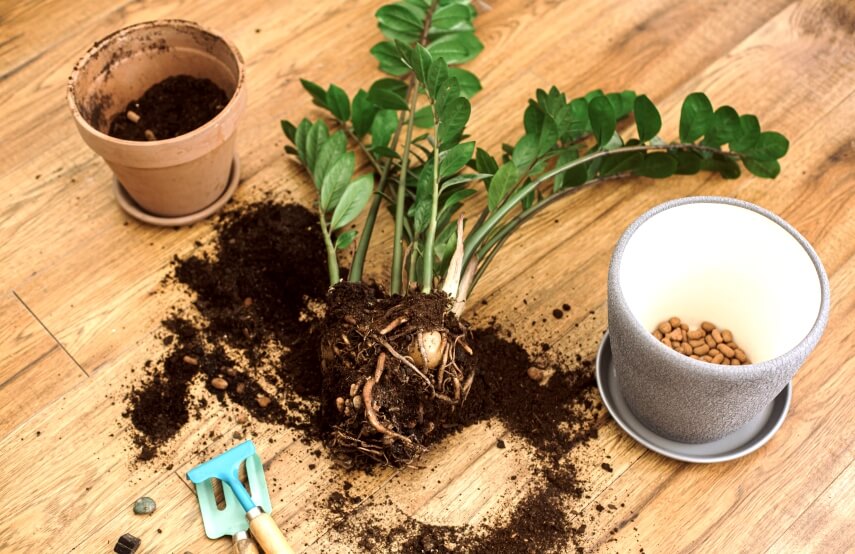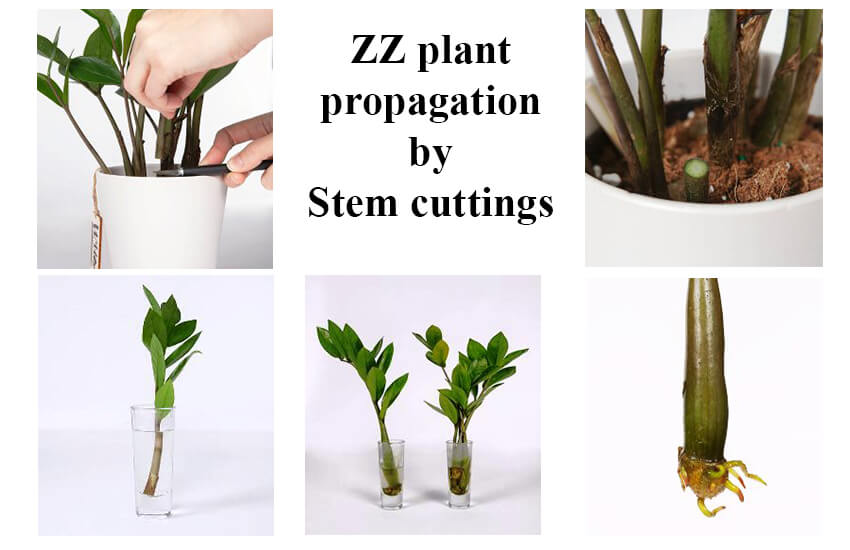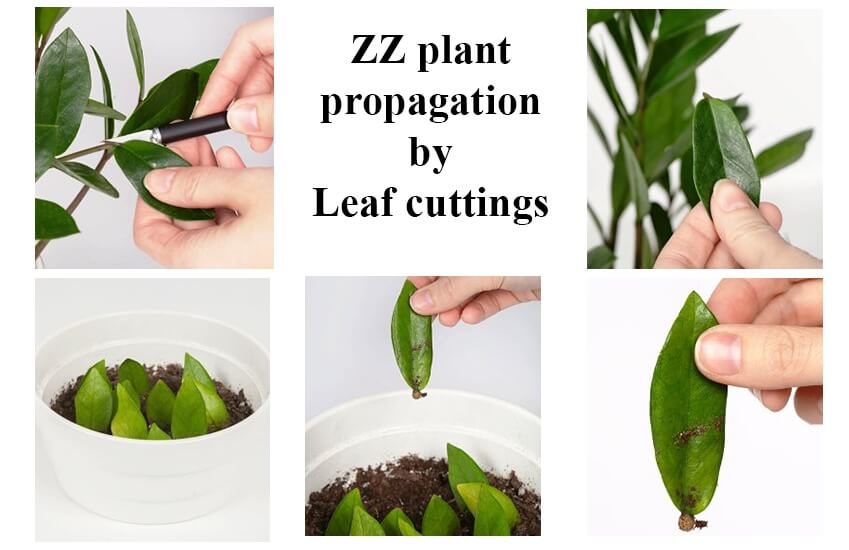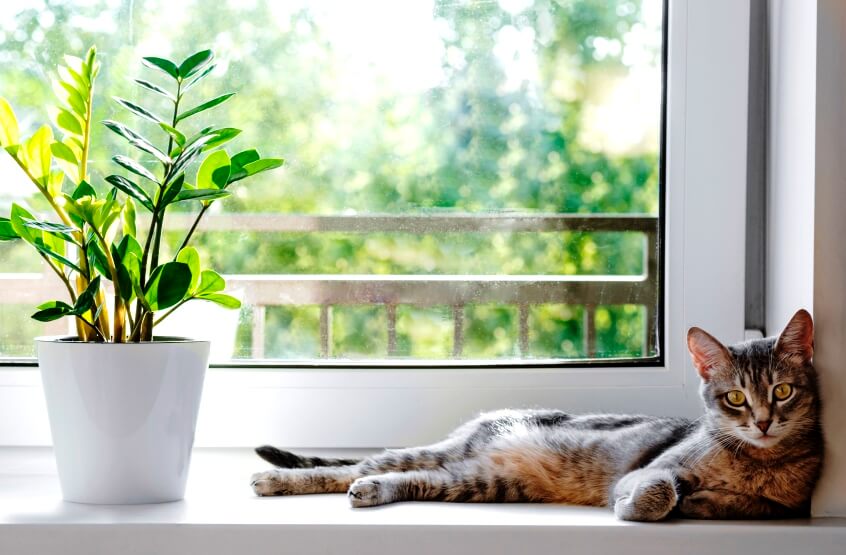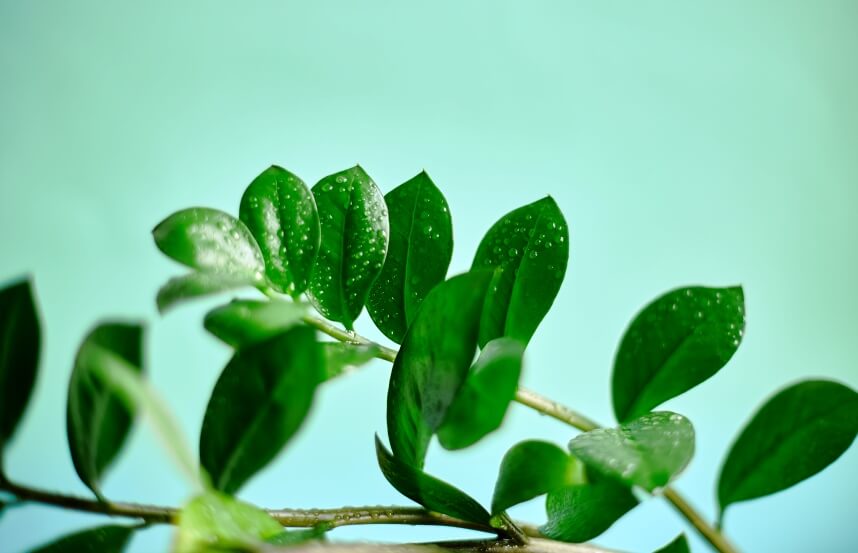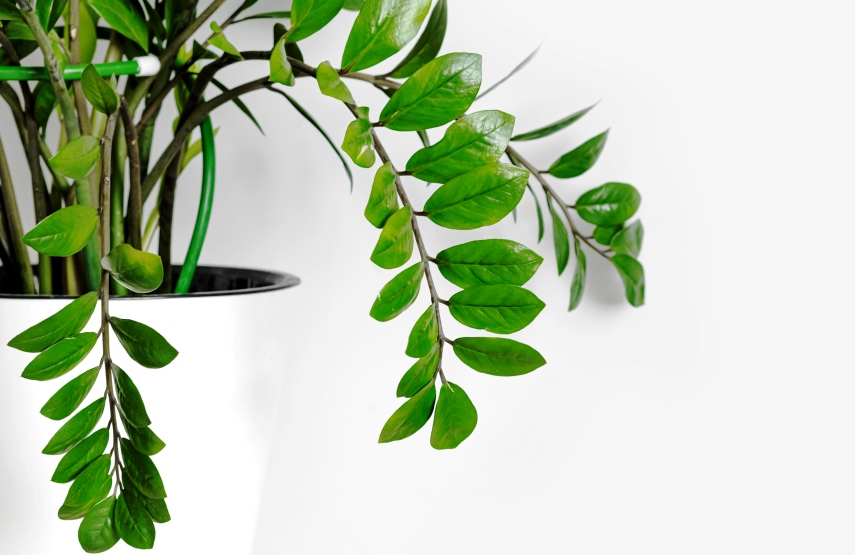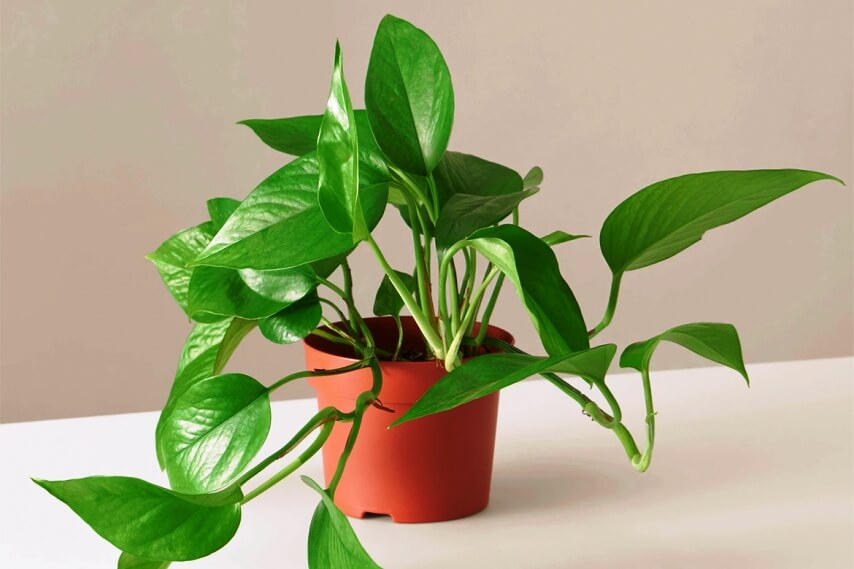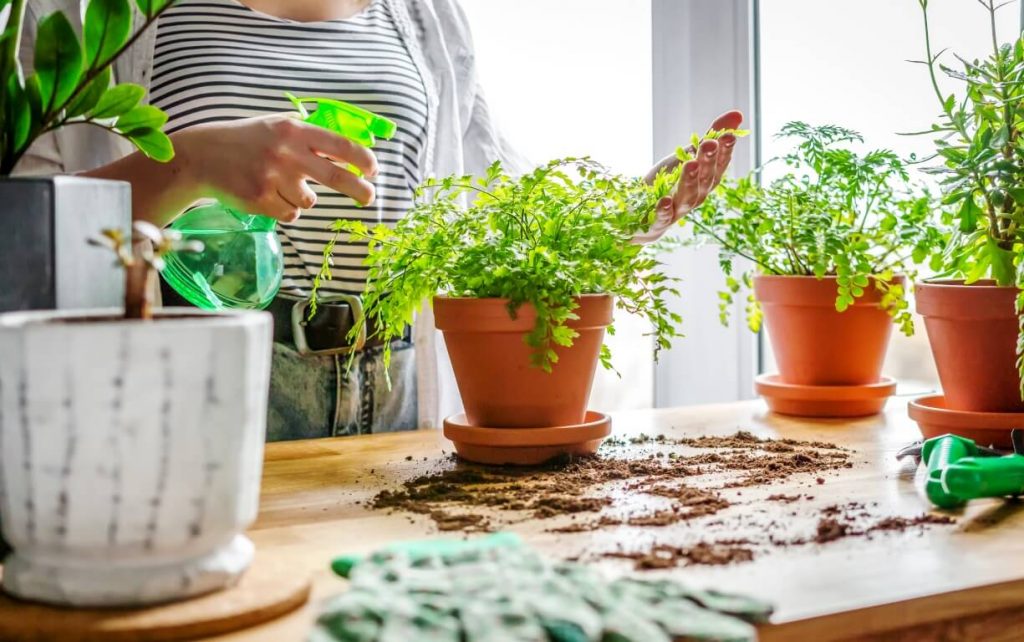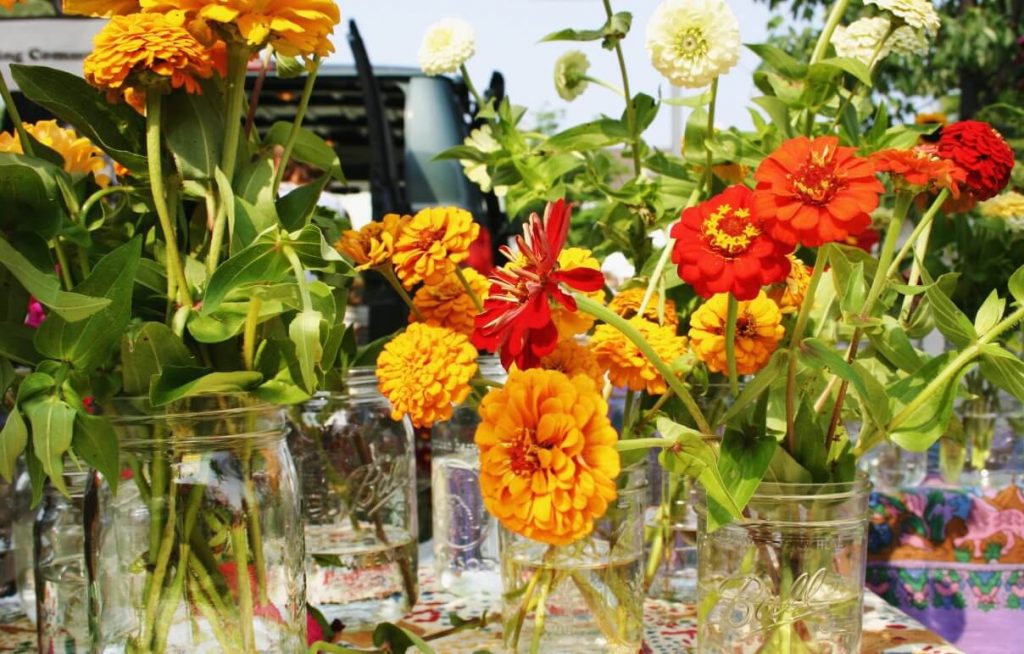Zamioculcas zamiifolia is commonly known as ZZ plant. It is also called Zanzibar gem. This plant is distinguished by its glossy, broad, oval-shaped leaves that shoot upward and grow rapidly indoors. ZZ plant is renowned for thriving in low-light environments where the majority of other plants would wither and perish.
ZZ plants add a nice bit of statuesque height to your decor and have modern, clean lines. This article will go through ZZ plant benefits to urge you to get a magnificent Zanzibar gem plant for your home or place of business.
If you are interested in houseplant benefits, you can also read
<<Monstera Plant Benefits>> and <<Wandering jew Plant Benefits>> articles.
What are ZZ plants?
The grasslands and woods of eastern Africa are home to Zamioculcas zamiifolia. This region is prone to prolonged droughts. As a result, ZZ plant is resistant to drought. The ZZ plant’s strong erect stems and rhizomes can store a lot of water [1].
In Africa, ZZ plants have existed for centuries. Dutch nurseries in South Africa recognized the plant’s potential for propagation a few decades ago, and in 1996 they began exporting it to other countries. Since then, ZZ plants have become commonplace in offices and homes worldwide[2].
ZZ plants benefits
ZZ Plant benefits are numerous. Aside from being beautiful and easy to care for, this plant offers various advantages far beyond aesthetic values. Here are some of the most important zamioculcas zamiifolia benefits:
Air purifying
Nowadays, we spend most of our time indoors; as a result, indoor air pollution is a serious hazard to human health. One of the ZZ Plant Benefits is improving indoor air quality.
A study testing the effectiveness of 15 different houseplants at removing xylene from contaminated air discovered that ZZ plants did so the best. Additionally, a recent study supports the idea that plants may filter the air, with ZZ plants proving to be particularly efficient.
By soaking up toxins like xylene, toluene, and carbon dioxide from the outside air, the ZZ plant aids in purifying the inside air. As a result, it is one of the rare plants that serves a purpose in addition to being beautiful!
Easy to care for
ZZ plants are easy to care for, do not require a lot of pruning, and survive dry soil and low light levels. Due to their robust rhizomes and dense, succulent-like leaves that effectively store moisture, these plants can withstand drought.
Since Zanzibar gems grow slowly, they do not require frequent repotting. Additionally, they do not require a lot of fertilizer to prosper. One or two applications of diluted, common houseplant fertilizer are sufficient throughout each growing season (spring and summer).
ZZ plants are adaptable to a range of humidity and temperature conditions. They do not need specific humidity concerns and grow well in typical indoor environments.
Note: When handling your ZZ plant and the pot, wear gloves. Crystals of calcium oxalate, which can irritate the skin and eyes, are present in the plant’s sap.
Easy propagation
ZZ plants can be propagated relatively easily. ZZ plants can be multiplied easily by the division method. Gently divide the rhizomes while repotting your ZZ plant, then replant them in fresh pots. Additionally, you can propagate a plant by leaf or stem cuttings method.
Stem cuttings method
A ZZ Plant stem cutting method results in quicker results for propagation. This is how you grow a ZZ Plant cutting [3]:
- Use a sterilized knife to cut straight at the base of your plant’s stalk.
- Submerge the cut stem in water, and replace the solution every 3 to 4 weeks. It’s okay if you forget as long as no mold forms.
- Place the cutting close to a window to get enough direct light. The best technique to promote the growth of your ZZ cutting is sunlight.
- Repotting should be done once your cuttings have developed a rhizome and at least an inch of new roots.
Leaf Cuttings method
Leaf cuttings can also be used to reproduce your ZZ Plant, albeit they will take longer to form a rhizome and roots [3]:
- Cut a leaf off as near the stalk as possible, so it takes a little bit of the stem.
- Insert the leaf’s stem about 1 cm deep into the potting soil.
- You should take several leaf cuttings, as one leaf in a planter would look depressing.
- Pour some water over the leafy plant and let it soak. Irrigate it every two weeks or when the soil is dry.
After three months, you should be ready to sow tiny baby rhizomes.
Aesthetic appeal
Most of us prefer to design our homes with elegance and beauty to promote comfort and tranquility. One of the best options for having a beautiful house design is ZZ plants. This plant can reflect the light that hits its leaves thanks to its glossy, dark green, tall, zigzag stems.
ZZ plant is excellent for any area inside your home since its height range of six to eight inches. If ZZ Plants are placed in rooms with white or very light-colored walls, they exhibit a rapid and statement-making appearance. You can also grow this plant in elegant baskets to make it more eye-catching.
Co2 reduction at night
It goes without saying that plants make a house look nicer. ZZ plant benefits, however, go even further. The ZZ plant uses a unique carbon fixation metabolism, as do several other arid region plant species, including the snake plant and jade plant.
They feature a special mechanism known as CAM (Crassulacean Acid Metabolism). The CAM mechanism enables ZZ plants to absorb CO2 at night. As a result, the ZZ plant is one of the few species that may be planted indoors to improve the quality of the air at night.
Drought resistant
The ZZ plants are adapted to withstand drought. Thanks to their thick rhizomes and leaves, they are excellent at retaining moisture. This indicates that this plant can go for weeks without irrigation.
Water your ZZ Plant every two to three weeks, letting the soil dry out in between. In stronger light, water more frequently; in lower light, less frequently. Wet potting mix or yellowing and mushy leaves indicate overwatering and root rot while wilting, wrinkled leaves and dry potting mix indicate the plant is thirsty [4].
Popular Feng shui plant
The ZZ plant has significance in the art of Feng Shui. The Vastu Shastra considers the ZZ plant to be a lucky plant. It stands for harmony and balance with nature in Feng shui. The ZZ plant is a fantastic option for individuals who want to bring luck and harmony into their living area regardless of whether they practice Vastu Shastra or Feng shui [5].
Chinese feng shui attributes ZZ Plant symbolism and significance to commitment, steadiness, growth, balance, and enhancement. ZZ plant is also known as a money plant or fortune tree since it will bring luck to the owner or everyone who lives there if it is placed inside a building, home, office, or desired corner. ZZ plant is a wonderful addition since it is on the list of plants used in feng shui, which means it can bring good chi into your house [6].
Mental health
Houseplants like ZZ plants provide a calming impression of nature and can help you concentrate and remember things better. Having a houseplant on your desk at work can also improve your cognitive function and prevent fatigue.
ZZ plants work as a natural air filter to maintain clean air flowing to your brain by removing pollutants from the air and oxygenating it. Additionally, this plant absorbs CO2 at night, enhancing the air quality in your bedroom and providing you with a way to concentrate and relax before going to sleep.
Pest resistant plant
Another amazing benefit of ZZ plant is its ability to withstand pests. Pests are less likely to harm the ZZ plants since they lack sap in their stems and leaves for pests to feed on.
According to an article published on HortTechnology, The ZZ plant is not susceptible to many horticultural diseases. However, there is an exception which is root rot. Their roots may rot when these plants are maintained in poorly aerated conditions with too much water.
Stress reduction
The last ZZ plant benefit is its ability to lessen stress in people. The ZZ plant offers freshness while also supplying relief, which makes it no different from other plants.
The Journal of Physiological Anthropology research demonstrates how exposure to indoor plants can reduce physiological and psychological stress. As your stress level decreases, your productivity rises naturally, allowing you to work more and sharpen your mind.
Thus, after lowering anxiety and despair, the ZZ plant can improve your mood and make you always joyful and energetic. A green or indoor plant like a ZZ plant on the table can also make reading a book more enjoyable. You can feel calm and be more creative when surrounded by plants.

